Disclosure: This post may contain affiliate links. I earn a small commission of product sales to keep this website going.
I don’t want to get drawn into the “better than” argument between mirrorless cameras and DSLRs because it’s too subjective. But there are certainly some advantages of mirrorless cameras worth considering.
We’ll take a look at some of the main advantages in this post. I followed this up with the disadvantages of mirrorless cameras in this post to read next.
Related:
Smaller Size & Weight
This is the obvious advantage of mirrorless cameras over DSLRs and the main reason that most photographers make the switch to mirrorless.
Removing all of that hardware between the lens, sensor, and viewfinder shaves down weight and size. It may seem insignificant to some, but it makes a huge difference to others.
Here’s a comparison of two popular professional cameras:
- Sony a7 III full-frame mirrorless camera: 5.0″ x 3.8″ x 2.9″, 1.43 pounds
- Canon 5D Mark IV full-frame DSLR: 5.9″ x 4.6″ x 3.0″, 1.76 pounds
And their comparable 24-70mm f/4 image-stabilized lenses:
- Sony Vario-Tessar T* 24-70mm f/4 ZA OSS: 2.87″ x 3.72″, 0.94 pounds
- Canon EF 24-70mm f/4L IS USM: 3.28″ x 3.66″, 1.32 pounds
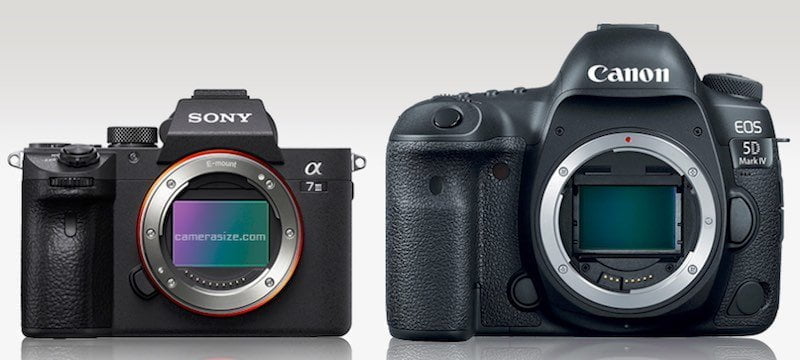
By volume, the footprint of a Sony a7 III with a 24-70mm f/4 stabilized lens is 35 cubic inches smaller than the Canon 5D Mark IV with the equivalent lens. It’s also 0.7 pounds lighter.
If you’re into ultralight travel and backpacking, you know firsthand that every ounce and cubic inch counts.
But the size & weight savings don’t end there.
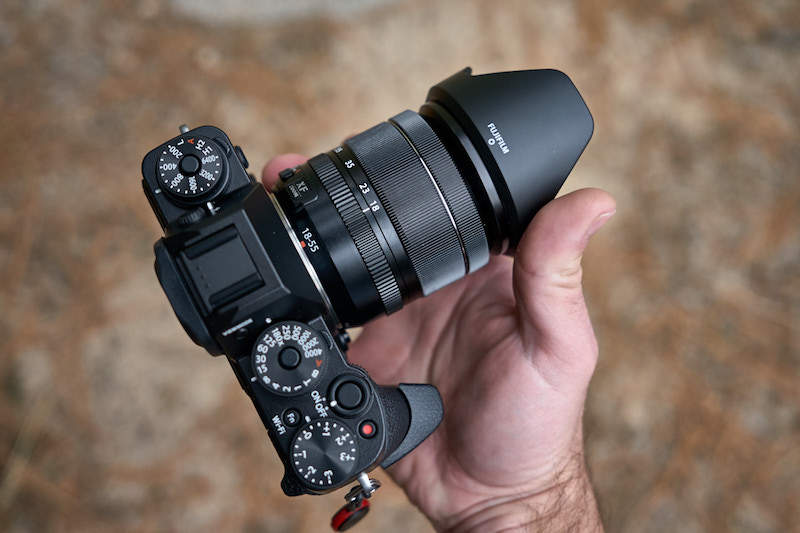
Further Reduced Size & Weight
In addition to the camera, what else do you take with you?
You need a bag to carry everything, a tripod capable of supporting the camera and lens, additional lenses, filters, etc.
A smaller and lighter camera will allow you to use a lighter tripod. With a smaller camera & lens kit and a smaller tripod, you can carry a smaller & lighter bag. Or you can enjoy the extra room for more personal gear. The reduced size & weight is a cumulative effect.
Electronic Viewfinder Capabilities
Electronic viewfinders aren’t perfect, but they’re quickly catching up to optical viewfinder quality.
The capabilities of an electronic viewfinder (EVF) are another one of the most significant advantages of mirrorless cameras.
DSLR LCD “Live View” has restrictions that an EVF doesn’t have.

White Balance
I’ve programmed one of my custom buttons to bring up the White Balance Kelvin settings for difficult color situations.
I can look through the EVF and, with just a few button presses, know that my final image will have a color balance that matches the scene I see with my eyes. This saves time in post-processing.
Manual Focus Aides
I really love using manual focus.
Mirrorless cameras have some great MF aides available in the EVF. I’ve programmed another button to magnify the image in the EVF, allowing me to fine-tune my focus where I want it.
There’s also a “focus peaking” mode, and Fujifilm offers another mode similar to the split prisms of old film cameras.
Read this post to learn all about Fujifilm’s outstanding manual focus aides.
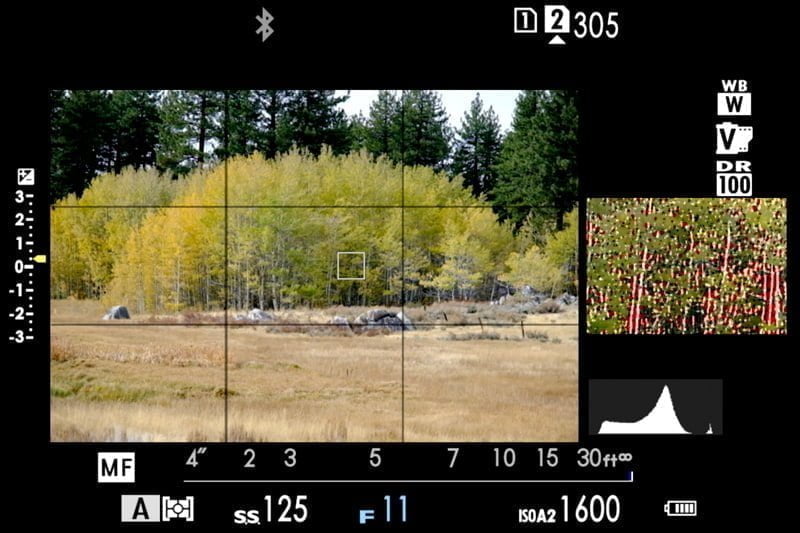
Histogram
I used to think this was cheating, but now I can’t live without it. This histogram is one of my favorite benefits of mirrorless cameras.
I have a histogram superimposed in the corner of my EVF, allowing me to nail my exposure on the first shot. This takes a lot of the guesswork out of metering.
The EVF can offer many more tools to the photographer, but these are just some of my favorites.
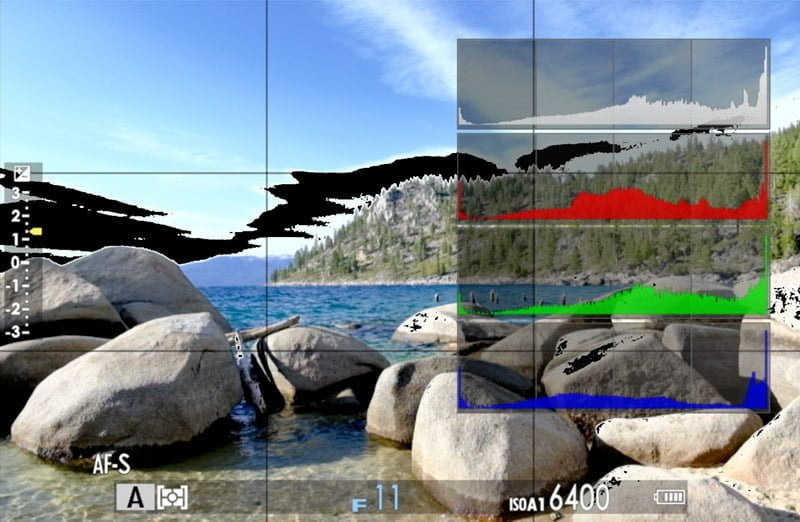
Hybrid Autofocus
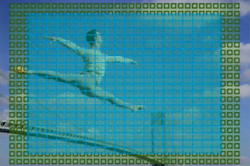
Sony claims to have the fastest autofocus in the world, thanks to taking advantage of a hybrid autofocus mode using both phase detection and contrast detection while shooting and recording video.
For the most part, DSLRs can only use the quick phase-detection method when the mirror is down. This prevents them from using phase detection during bursts and while shooting video.
Canon has, as of late, introduced phase detection sensors in front of the imaging sensor in a few DSLRs, but generally speaking, mirrorless cameras hold the lead here.
This quick & accurate autofocus feature makes mirrorless cameras favored by many videographers.
Photo Burst
The Sony a9 can shoot a photo burst of an insane 20 frames per second – yes, that’s with a 24MP RAW file.
This is another one of the enormous advantages of mirrorless cameras, not having a mirror to get in the way and being able to see exactly what the sensor is seeing.
You can continue to shoot a photo burst while seeing what you’re doing in the EVF. There is no blackout like with DSLRs.
Inconspicuous

I don’t like to draw attention to myself while I’m traveling.
A large camera kit on top of a large tripod inevitably draws onlookers, attracts thieves, or even restricts you from “no tripods or professional cameras” locations.
A Fujifilm X100V with graphite silver trim will let you pass as a hobbyist or one of those weird analog camera holdouts.
Mirrorless cameras also have a truly silent shutter – in fact, so silent that you can program them to make a fake sound so that you get some feedback.
DSLRs may advertise a “silent shutter,” but when you compare a mirrorless camera vs. DSLR “silent” mode, mirrorless is infinitely quieter.
Do the advantages of mirrorless cameras work for you?
I don’t know what kind of photographer you are – your style, needs, and experience – but these are the objective advantages of mirrorless cameras vs. DSLRs.
These advantages may not matter to your photography, and that’s cool too. But for minimalist travel photographers, mirrorless cameras are a clear choice.
Mirrorless cameras also have disadvantages; you can read them in this post. Technology is advancing and pulling away from DSLRs every year, so there won’t be any disadvantages soon!

Drew
Saturday 11th of August 2018
Hi John,
I'm looking to purchase a full frame camera for photographing the Northern Lights in February. Do you have any thoughts on Mirrorless vs DSLR for that? Do you think the axis stabilization helps or hurts? Do you think the mirror movement is enough to blur images at all?
John Peltier
Monday 13th of August 2018
Hi Drew, I used a Sony a7II when I photographed the Aurora in Iceland and found it worked great. The image stabilization should be a non-issue; you should have stabilization turned off for long exposures on a tripod. The mirror movement can also be avoided by a "lock mirror up" mechanism found in most DSLRs, and even without it, the mirror slap usually doesn't cause any perceptible blur as long as the camera is secured. I think in this case the choice is up to you if you want a mirrorless or DSLR. I just loved having the mirrorless for this so that I could match my white balance in-camera during the shot and having manual focus aides not found on DSLRs. Those would be two benefits for the northern lights.